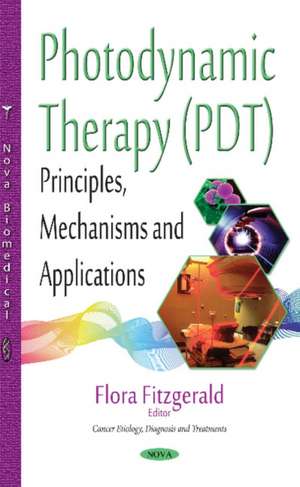Photodynamic Therapy (PDT): Principles, Mechanisms & Applications
Editat de Flora Fitzgeralden Limba Engleză Hardback – 31 mai 2017
Preț: 914.13 lei
Preț vechi: 962.24 lei
-5% Nou
Puncte Express: 1371
Preț estimativ în valută:
175.00€ • 182.60$ • 146.70£
175.00€ • 182.60$ • 146.70£
Carte indisponibilă temporar
Doresc să fiu notificat când acest titlu va fi disponibil:
Se trimite...
Preluare comenzi: 021 569.72.76
Specificații
ISBN-13: 9781536119121
ISBN-10: 1536119121
Pagini: 145
Dimensiuni: 155 x 230 x 18 mm
Greutate: 0.42 kg
Editura: Nova Science Publishers Inc
Colecția Nova Science Publishers Inc
ISBN-10: 1536119121
Pagini: 145
Dimensiuni: 155 x 230 x 18 mm
Greutate: 0.42 kg
Editura: Nova Science Publishers Inc
Colecția Nova Science Publishers Inc
Cuprins
Preface; Photodynamic Therapies: Basic Mechanism, Applications & Functional Nanomaterial-Based Drug Delivery System for Cancer; Carbon Based Nanomaterials as Agents for Photodynamic Therapy; Chemi- & Bioluminescence in Self-Illuminating Photodynamic Therapy; The Synthesis & Characterization of Novel 5,10,15,20-Tetrakis(Benzo[B]Thiophene) Porphyrin & 5,10,15,20-Tetrakis (7- Sulfonatobenzo[B]Thiophene) Porphyrin as Photodynamic Therapy Agents against Human Breast Cancer Cells; Photodynamic Therapy for Gastric Cancer Patients on Oral Antithrombotic Therapy; The Need for a Parameter of Sensitizers Concentration in Cancer Tissue to Estimate PDT Effects; Index.
